A community in crisis
How Northview, Johns Creek, and the world’s mental health is plagued by current crises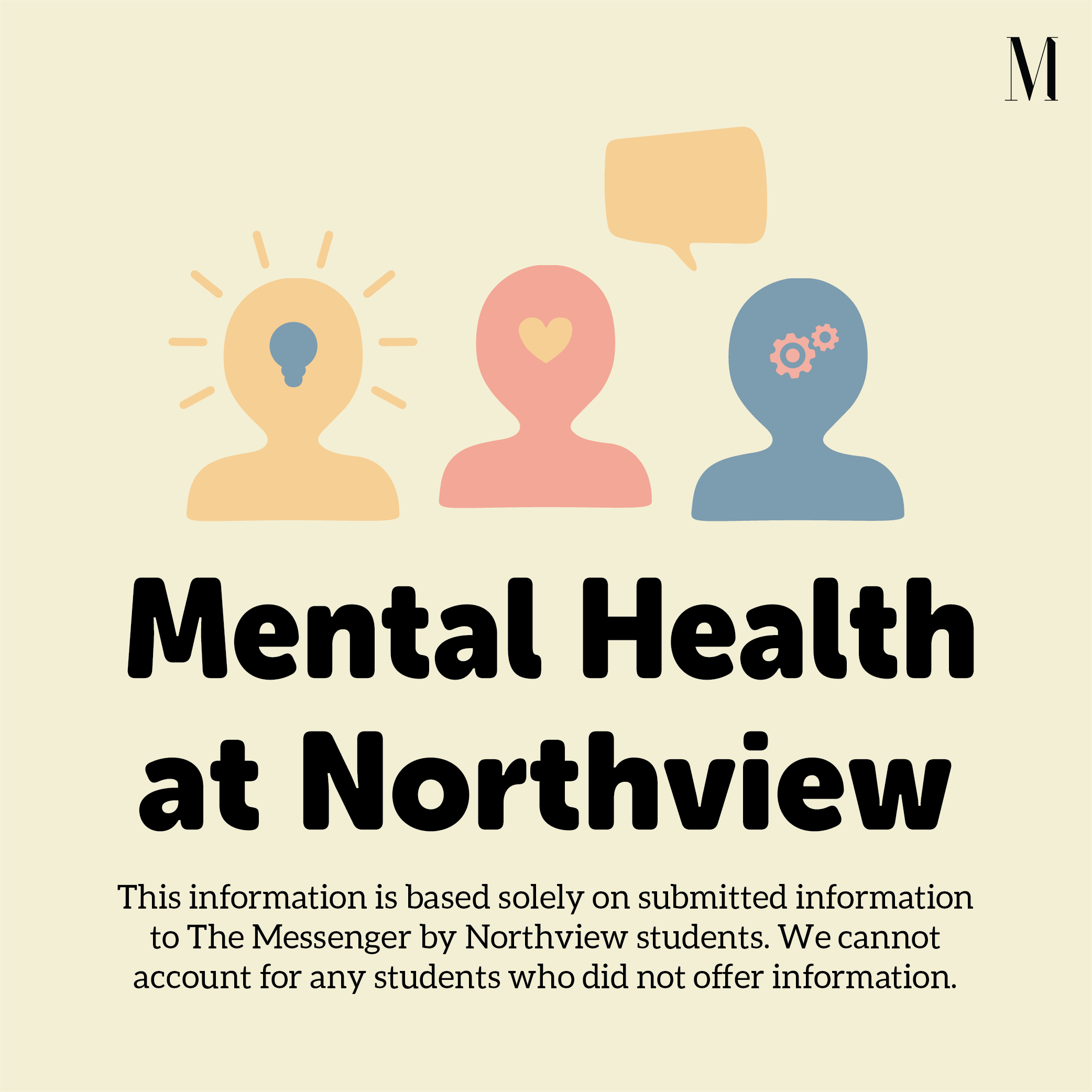
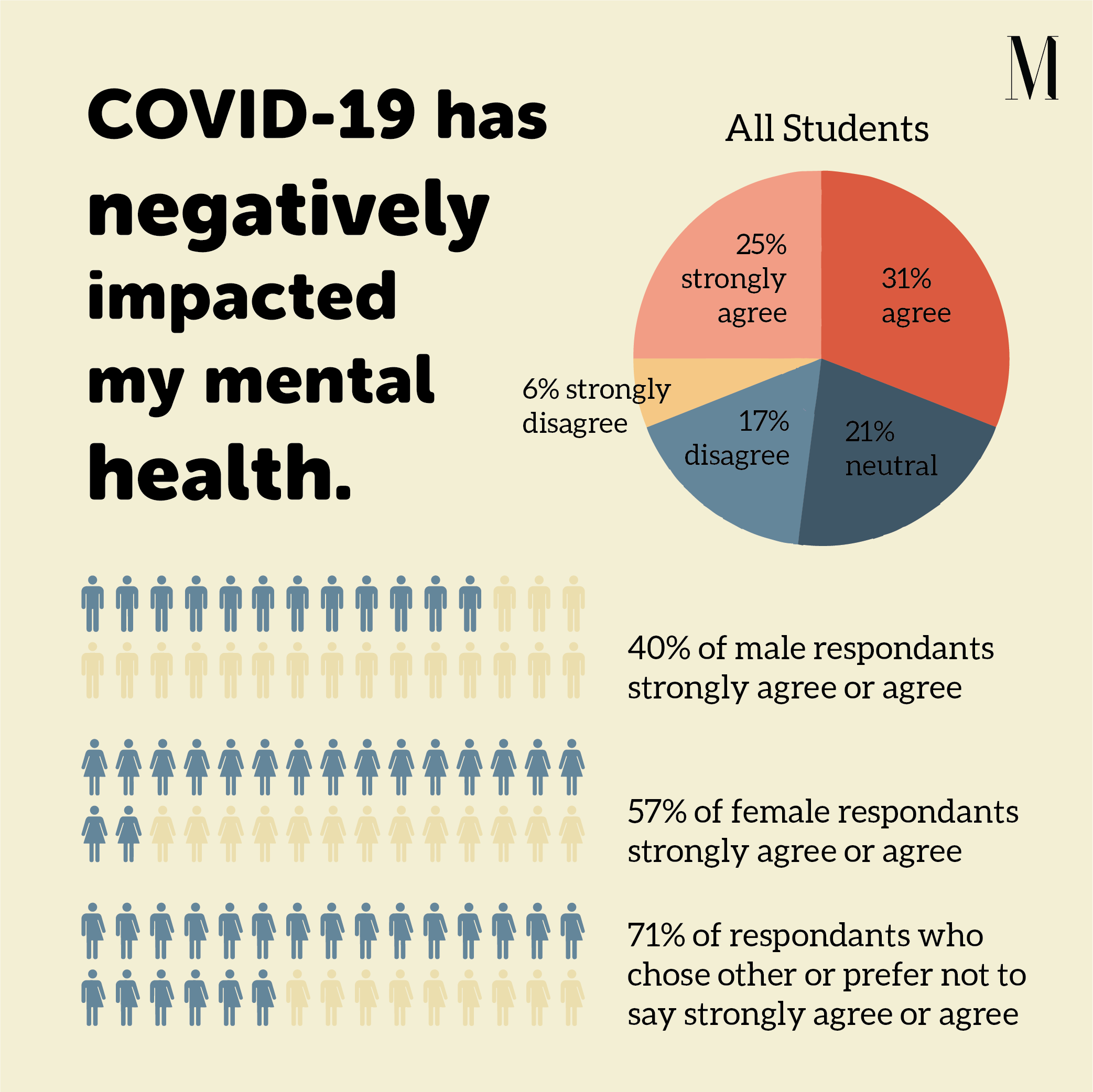
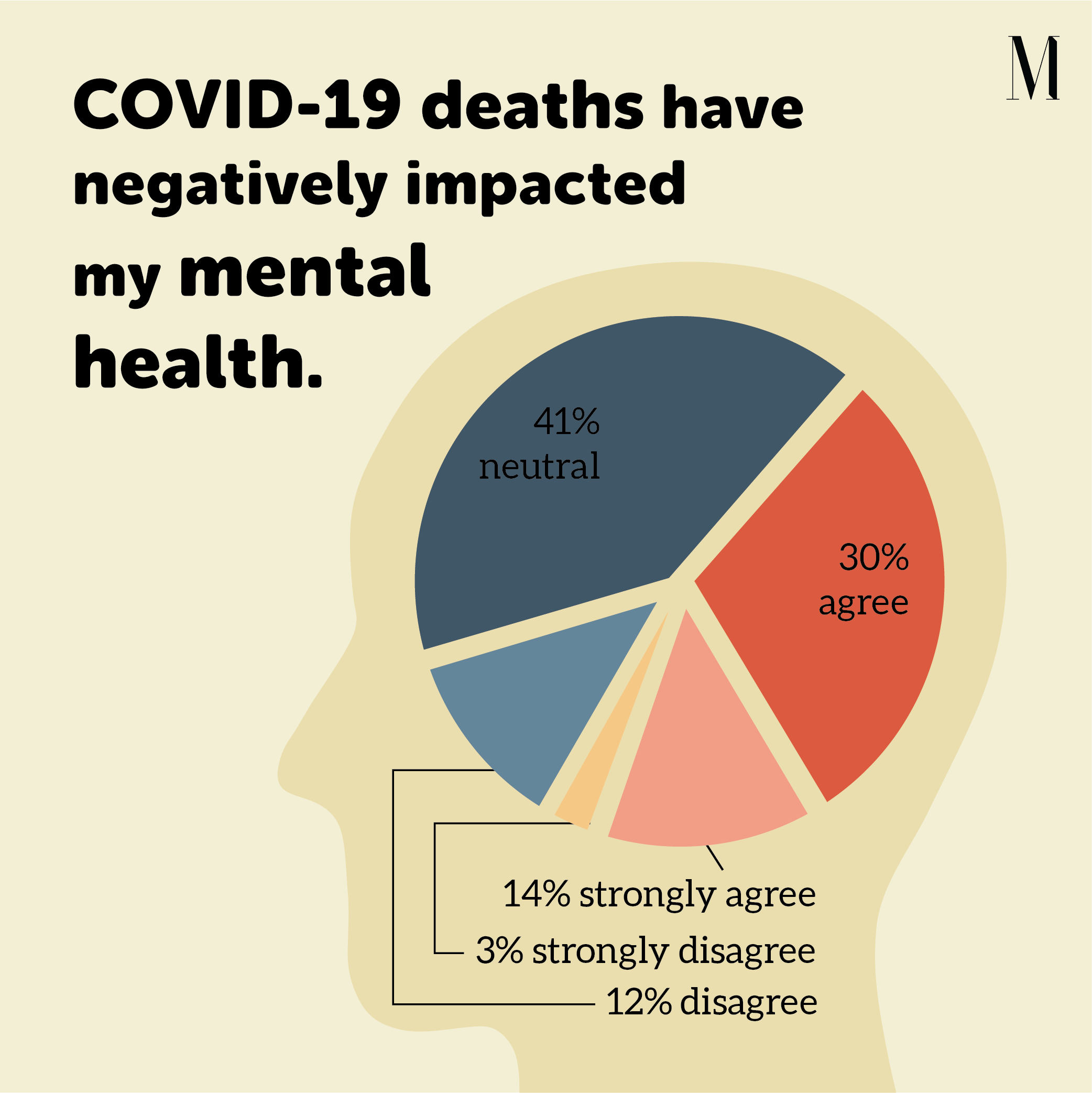
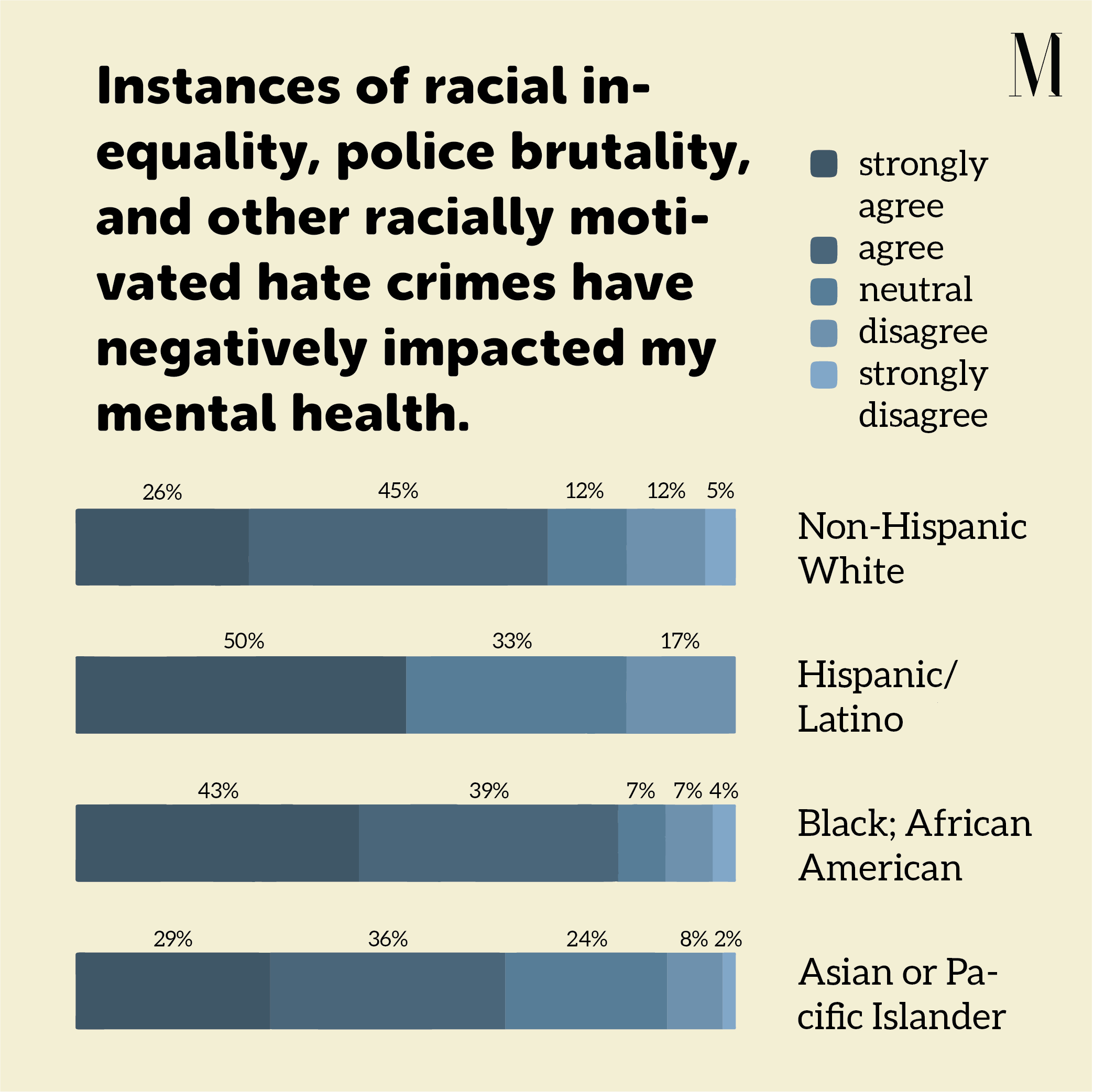
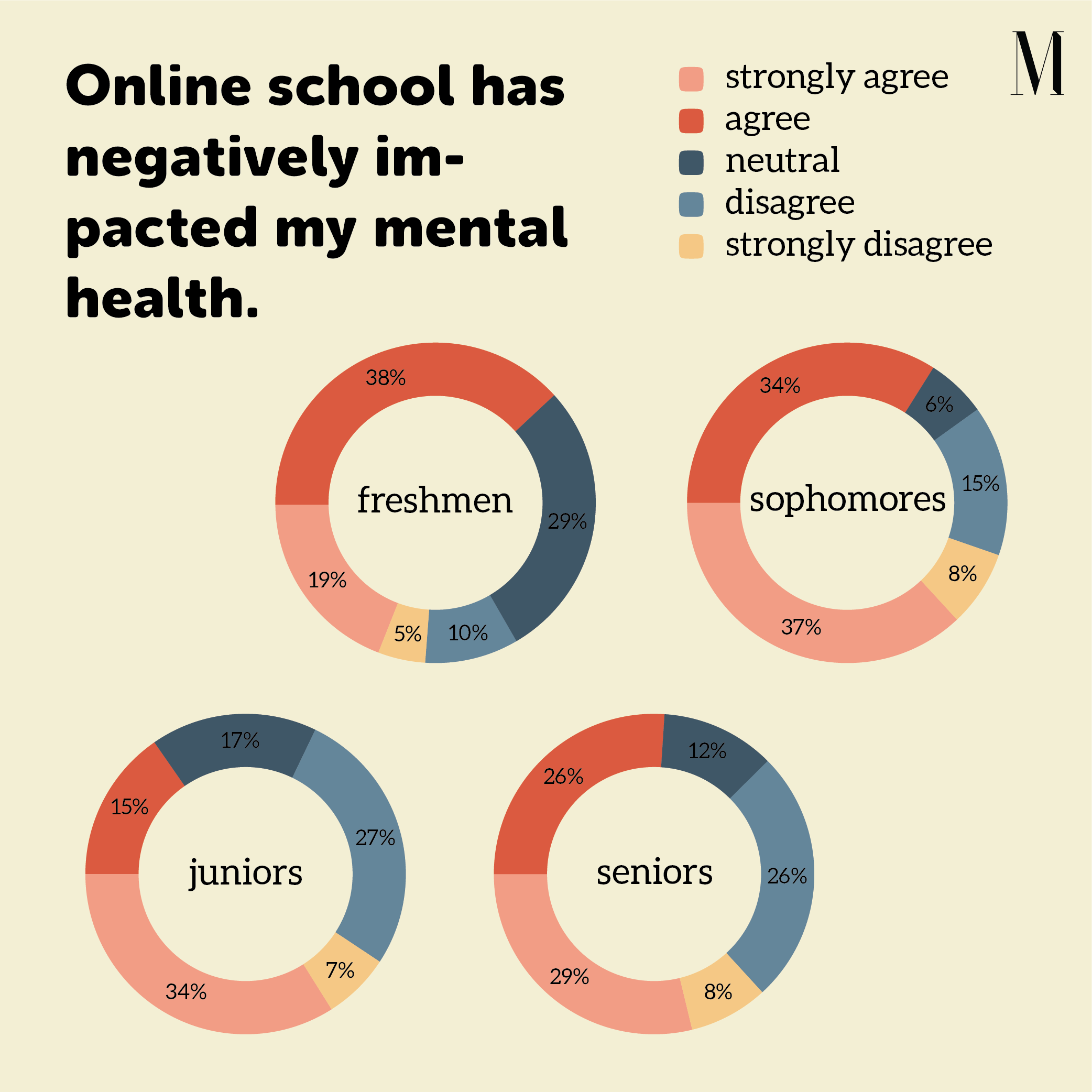
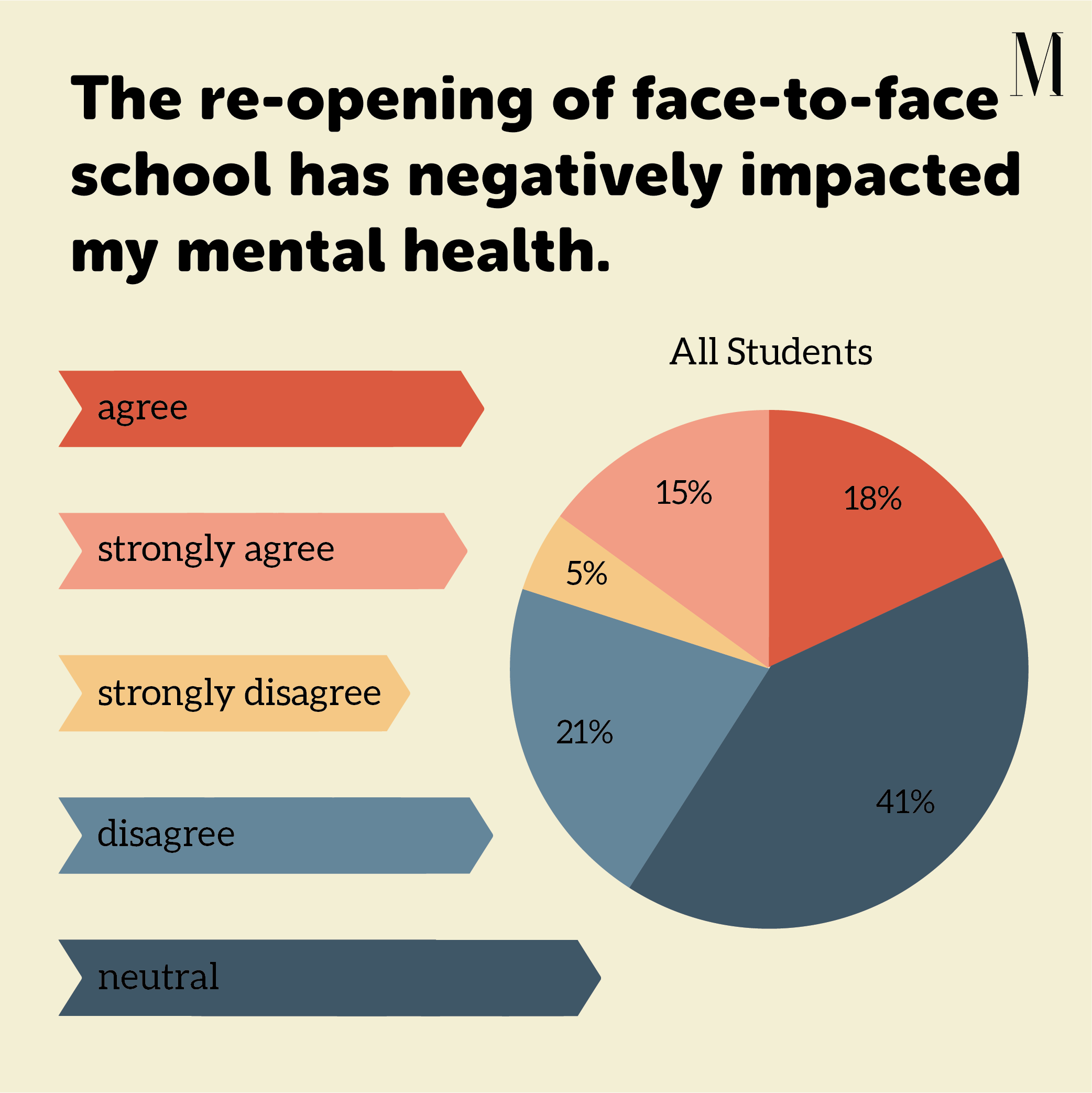
Graphic by Melissa Liu, Managing Print and Design Editor
Megan Serfontein, Copy Editor & Disha Kumar, Staff Writer
Johns Creek, Ga., is like most other suburbs — a community filled with people doing their best to navigate through daily life. For parents, it means juggling work and other involvements to provide a good life for their children. For students, it means eagerly heading to school each day and interacting with their peers. For teachers, it means lesson planning and lecturing. But, when daily life came to a halt, so did much more. All the unknowns associated with quarantine instilled feelings of fear and anxiety within the community. Families grieved the loss of loved ones and lacked the same support that they had before the enactment of social distancing guidelines. Now, even seven months later, the community is plagued with collective trauma and more challenges on the mental health front than ever before.
Mental health challenges are not a new problem for Northview; COVID-19 is just a hindrance that has made it worse. According to the World Health Organization, one in six adolescents suffers from a mental health condition severe enough to impact their daily routines. In teenage girls and LGBTQIA+ teens, that number is even higher. Previously, when school was face-to-face, teachers and students could identify if someone was struggling and provide them with the necessary help. However, in a virtual setting, it is almost impossible to discern whether someone is struggling or not. The challenges of pre-pandemic mental health, such as the stigma of mental health not being taken seriously and the lack of mental health resources and legislation, have only been amplified by the pandemic.
“The general societal consensus for mental illness is either that it’s a joke or people should just suck it up and move on,” Matthew Kim, the executive director of Youth Advocates for Mental Health, said. “I’m sure we’ve all said ‘I’m depressed’ after getting one bad grade on a test. I get that — anyone would be saddened, but saying that inherently marginalizes and takes the seriousness away from the actual mental health disorder that is depression and needs to be dealt with.”
There are several support systems in place for students at Northview. Although there are not any therapists on staff, counselors and administrators are able to identify mental health problems they can recognize and help students get the support that they need.
“We can identify a student that’s in crisis or that has a mental health issue, but we’re not going to be the ones who fix it,” Brian Downey, principal of Northview said. “But, we can put you in the hands of the right people who will. That’s our function as a school.”
Northview is affiliated with Summit Counseling, a community organization that sends a therapist to the school a few days each week. Experts provide recommendations to students, and it is Northview’s job to follow up with students and ensure that they are receiving the proper guidance.
Northview has also partnered with the Will to Live Foundation to spread awareness of mental health issues and foster a more welcoming community among students. However, there is still a long way to go when it comes to approaching these issues.
“There’s still the stigma that’s associated with mental illness or the need for some extra help. We’re still trying to overcome that.”
Through Summit Counseling and other programs, mental health courses are also offered to parents. In the past, there have been evening classes where a guest speaker would come to talk to parents about teenage mental health issues, such as depression, and ensure that the community was educated on the troubles their children are facing.
“The district has now hired additional social and emotional workers whose sole job is to support schools and individual kids who are struggling with their mental health,” Downey said. “We’ve added that layer of support.”
Rachel Kitchens-Cole, Fulton County’s social worker, has personally seen the toll that virtual learning has taken on students’ mental health.
“Remote learning highlights the fact that all students have different needs, different ways of learning, different struggles, and different strengths,” Kitchens-Cole said. “The pandemic has shown differences in so many kids. I think this is something important to keep in mind.”
Despite these differences, there are steps each student can take to ease the difficulties associated with online learning. These include making a schedule, regularly taking breaks, connecting with peers, and intentionally doing something that makes them feel good.
“I like to do a brain dump. I know that sounds silly, but when your head feels full, just take a piece of paper or a journal and write all your thoughts out,” Kitchens-Cole said. “With your self-care, try to squeeze in something that makes you laugh, so you smile every day.”
The pandemic has also cost 25 million people their jobs, leading to unprecedented amounts of people facing evictions, being unable to take care of their families, and facing financial struggles. This uncertainty about what tomorrow holds brings worry and stress to every aspect of life in an already dire situation. According to the National Library of Medicine, individuals in poverty and uncertain financial situations are more likely to experience mental illnesses and suicidal ideation. The stressor of finances leads to higher levels of depression and anxiety in children of families below the poverty line.
“I have definitely been losing sleep over it. My plans for the future have been impacted,” Sarah Schmidt, a University of North Georgia student who lost her job as a nanny when COVID-19 hit, said.
While all students are being impacted, high school seniors are worried about how the pandemic will affect their education post-high school. Although many universities are waiving their standardized test requirement, there is still pressure for seniors to have those scores on their applications. Seniors are also lacking the support system of physically being able to meet with their counselors and teachers that pre-COVID-19 classes had.
Teenagers especially bear the brunt of this pandemic, with the activities associated with high school being stripped away from them. Not only has the pandemic resulted in the cancellation of events such as prom and graduation, but it has also led many to become disconnected from their peers. In a recent survey conducted by The Messenger, most students strongly agreed or somewhat agreed that virtual learning has negatively impacted their mental health.
“Everything that we’ve been waiting for and hearing about since freshman year is gone, and time doesn’t turn back,” an anonymous senior said. “It’s such a depressing feeling to try and go out and have a good time, but I can’t. It’s not the same.”
Several students share this same viewpoint, but isolation from peers is not the only factor contributing to this feeling. Other students have complained about the struggles of increase in self-directed study or the hours of prolonged screen time each day. Despite these drawbacks associated with remote learning, many students are scared to return to school. Many feel that the decision to reopen was made hastily and that it is still too dangerous to go back to school prior to the start of the flu season. A lot of students have high-risk family members in their homes and worry about the safety of their loved ones. Others have been personally affected by COVID-19 deaths.
The impact of mental health does not rest on teenagers alone; the mental health of frontline workers has also been affected by the pandemic. Although they do not have to deal with online learning, their workplace and profession pose challenges of their own.
“It was really stressful at first, worrying about the protective equipment, running out of masks and gowns, and all of these things,” Carter Mills, a Northside Hospital nurse said. “It’s just different. We’ve had to adapt to do our job as best we can while keeping everybody safe.”
In spite of all of these challenges, nurses and doctors still feel the need to fulfill their duty to better the community.
“It’s what we signed up for. That’s what our job is. That’s what we’re passionate about,” Mills said. “That’s the kind of risk you take when you go into healthcare.”
Since the start of the pandemic, coping with the situation has gotten a bit easier for frontline workers. Healthcare workers have realized that, at times like these, it is important for everyone to work as a team.
“It’s been just being supportive of each other, you know; we’re all in this together, all in this to get a job done,” Mills said. “We do the best we can and help each other out, to keep everybody safe.”
Along with the pandemic, the start of the summer brought with it other crises: racial inequality, police brutality, and other racially motivated hate crimes. These issues not only are related to humans rights and safety but also involve mental health as well. Columbia University’s Psychiatry Department (CUPD) found that Black teens and adults are more likely to suffer from mental health issues than their white counterparts, and they are less likely to receive treatment. CUPD also found that Black households are less likely to talk to their children about mental health struggles and address mental health problems within their families.
“Mental health in [the Black] community is taboo. It’s something that we don’t talk about. Many people have heard their parents say to just pray it away, or they’ve been told they shouldn’t feel depressed due to having a roof over their head, food, etcetera,” Nicole Davison, a senior said. “Our parents who say that only say that because their parents said that; it’s a cycle.”
The protests over the summer were sparked by the murder of George Floyd and have continued to render justice for hundreds of other police brutality victims. Videos, footage, and news are being shared on every corner of the internet from Instagram to new channels. However, videos, such as those of Floyd’s murder, have been shown to cause anxiety, fear, hyper-vigilance, and dissociation within the Black community. In the same survey that was conducted by The Messenger, 58% of responders said that their mental health has been negatively impacted by coverage of racial inequality, police brutality, and other racially motivated hate crimes.
“I feel like it desensitizes people to the issue. You're just seeing those videos blankly, and I know some people who live in worse conditions than I do. It can be very triggering [for them],” senior and student activist Danae Troupe said.
Another negative impact of this crisis is the dismissal of the movement. In the survey, there were several individuals who made a mockery of the movement and others’ lives by providing inappropriate and disrespectful responses. A great deal of the negativity towards the movement stems from the fact that those in power have not made an effort to promote change and those with larger platforms have still been spreading messages of racism and hate. In fact, many teenagers — including those at Northview — have seen their peers make racist comments online and in person without facing repercussions for them. Troupe was tired of seeing the insensitivity and racism online and started calling out her peers. In turn, she had hate accounts created about her.
“Seeing people on the news spew their racism and discrimination against your people under the guise of not condoning violence and riots is tough. Watching people’s true colors come out is tough,” Davison said.
Another ordeal many face, in addition to more visible struggles during this crisis, is inner conflict. Many Black teenagers feel that they are not doing enough to fight inequality. Since they cannot vote and often cannot protest due to their parents’ fear of danger, they try to do what they can at home.
“When I was younger, I let a lot fly that I shouldn’t have, but, now that I am older, I am not letting it go anymore,” Troupe said.
The trivialization of activism has also been a huge problem during the crisis. People participating in performative activism have damaged the credibility of the movement, hurting those whose lives are impacted by racism and police brutality. It has also allowed the media to twist the image of what the movement really is, causing more ideas of racism and hate to spread.
“For some people, this is just like’okay, I did my daily activism,’ but I'm going to have to live with it for the rest of my life. This doesn’t end for me after high school,” Troupe said.
No one — students, teachers, family, workers, and peers — had any idea that they would be thrust into the midst of a pandemic and racial violence. In this diverse community, every individual has their own challenges that they must deal with on a daily basis, which have only been exacerbated by these crises. From all these differing perspectives, though, one lesson can be learned: it is important to make the most out of the situation and stay together (even if physically, it is six feet apart).

